Visiting Mexico City means immersing yourself in one of the most vibrant and chaotic cities in Latin America. Traffic, markets, music, people everywhere... it can be overwhelming at first, but over time, you begin to enjoy the mix that is so unique to Mexico.
I loved how the city combines history, art, gastronomy, and everyday life in every corner: from Aztec vestiges in the heart of the city center to Diego Rivera murals, world-class museums, and street food.
Although I was only in Mexico City for two days, a time that was too short for everything it has to offer, I tried to make the most of it and walk its streets as much as possible.
In this article, I'm going to tell you about my experience and what I discovered you can do in this enormous capital.
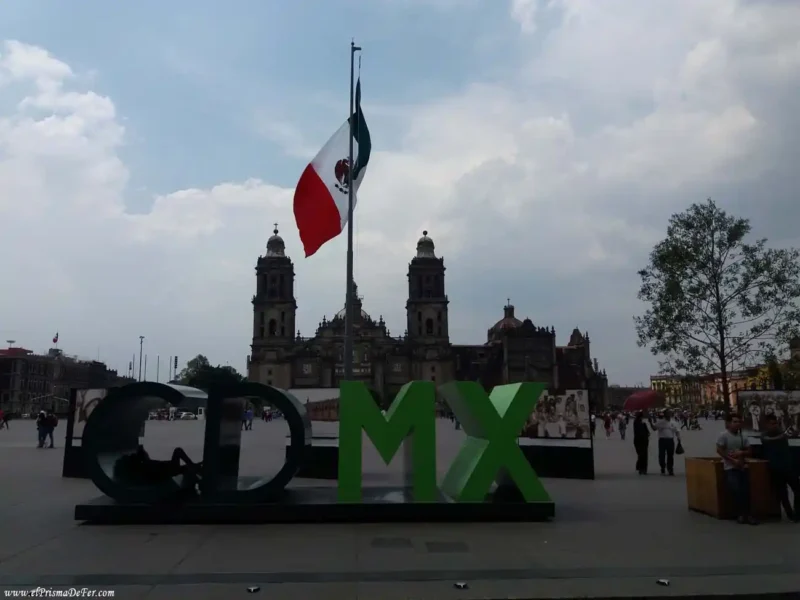
Table of Contents
History of Mexico City
The history of Mexico City dates back to pre-Hispanic times, when the Mexica founded Tenochtitlan in the middle of Lake Texcoco in 1325. This city became one of the most powerful and advanced on the continent, with canals, temples, and a political and social organization that surprised even the Spanish conquistadors.
In 1521, after the fall of Tenochtitlán, the Spanish built Mexico City on its ruins, which became the capital of the viceroyalty of New Spain. Numerous buildings, churches, and plazas from that colonial era remain, merging with the modernity of the city today.
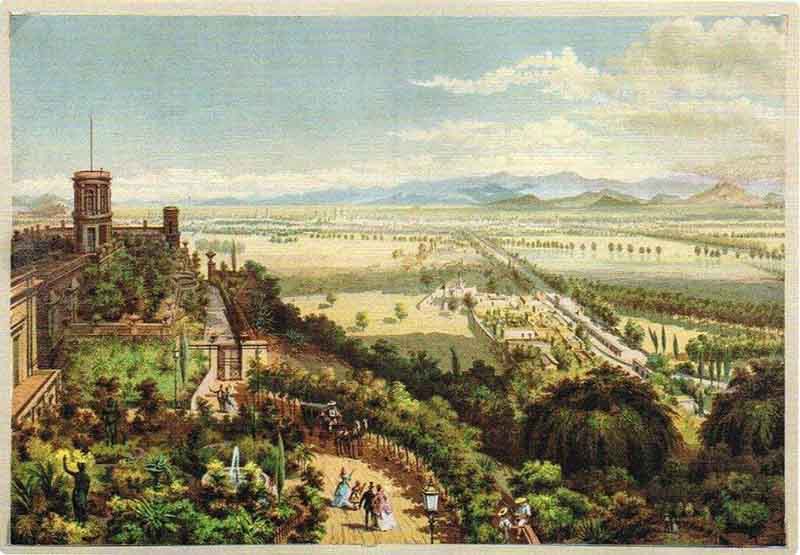
Today, Mexico City is one of the largest cities in the world, and this blend of indigenous past, colonial legacy, and contemporary life is what makes it unique.
Walking through it means constantly encountering traces of its history, from the Templo Mayor in the heart of the historic center to the palaces, museums, and neighborhoods that preserve centuries of transformation.
How to get around Mexico City
Mexico City is huge, but it has a various and accessible transportation system that allows you to get around without any problems.
Metro
The metro is the fastest and most economical way to get around the city. With 12 lines covering much of Mexico City, it connects tourist areas, neighborhoods, and transfer stations. The fare is very cheap (less than $0.30 per ride), although it can be very crowded during rush hour. It's important to take care of your belongings and avoid empty cars at night.
Metrobus
The Metrobus operates on dedicated lanes and connects several important areas, such as downtown with Coyoacán, Polanco, and the Basilica of Guadalupe. It's a bit more expensive than the metro but also very efficient and comfortable.
Taxi and apps
For added convenience, especially at night or if you're traveling in a group, Uber, Didi, and Cabify are safe and reliable options. Avoid taking unregulated taxis on the street, as they can be risky.
Walking
In tourist areas like the Historic Center, Coyoacán, or Chapultepec, walking is the best way to soak up city life, discovering markets, plazas, and pedestrian streets steeped in history and culture.
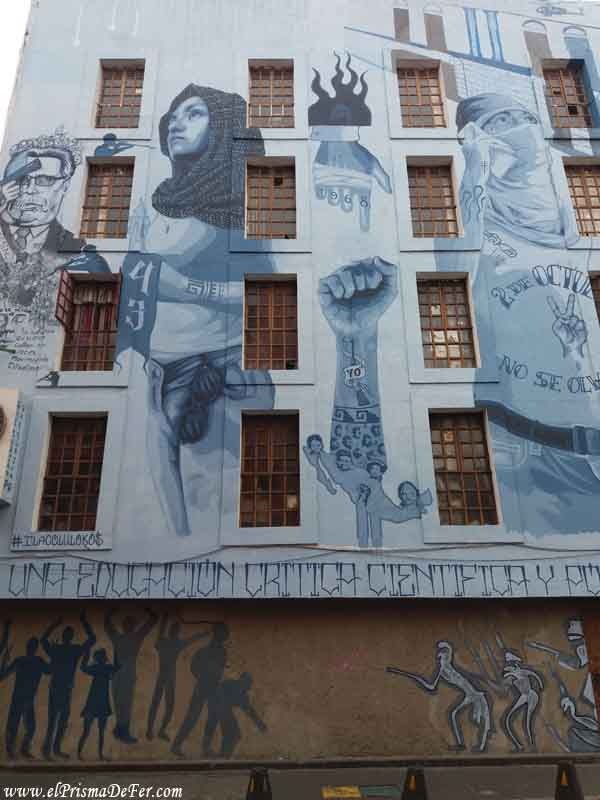
Map with the main attractions to see in Mexico City
What to do in Mexico City
Tour the Historic Center
The heart of the capital is its Historic Center, declared a World Heritage Site by UNESCO. Here you will find the Zócalo, one of the largest squares in the world, surrounded by the Metropolitan Cathedral and the National Palace, where you can admire Diego Rivera's murals.
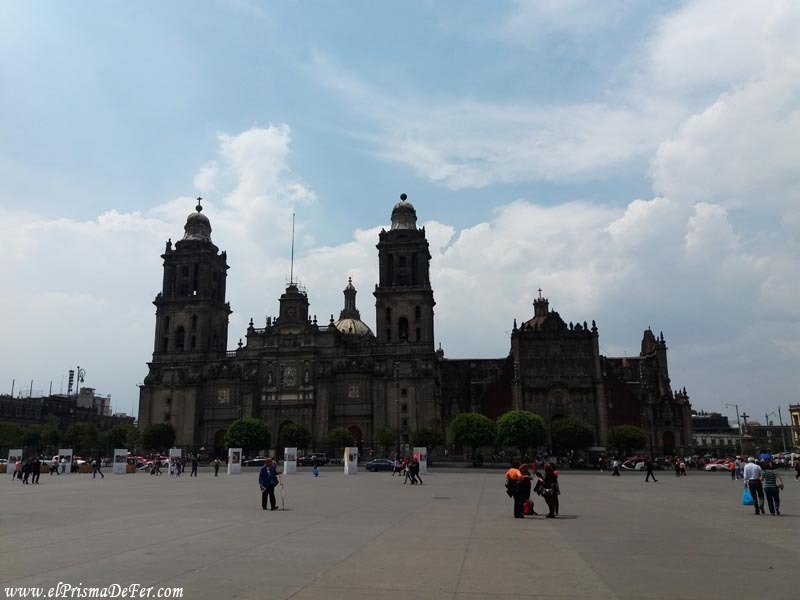
Walking through its streets is like discovering colonial churches, buildings from different eras, and corners full of life.
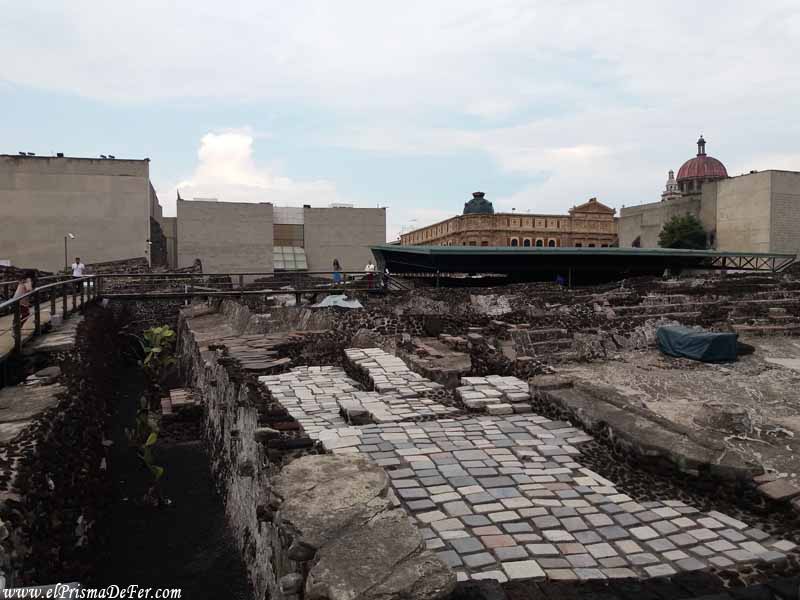
Don't forget to visit the Templo Mayor, the remains of ancient Tenochtitlán that coexist with the current city, and the Palace of Fine Arts, a cultural icon with unique architecture.
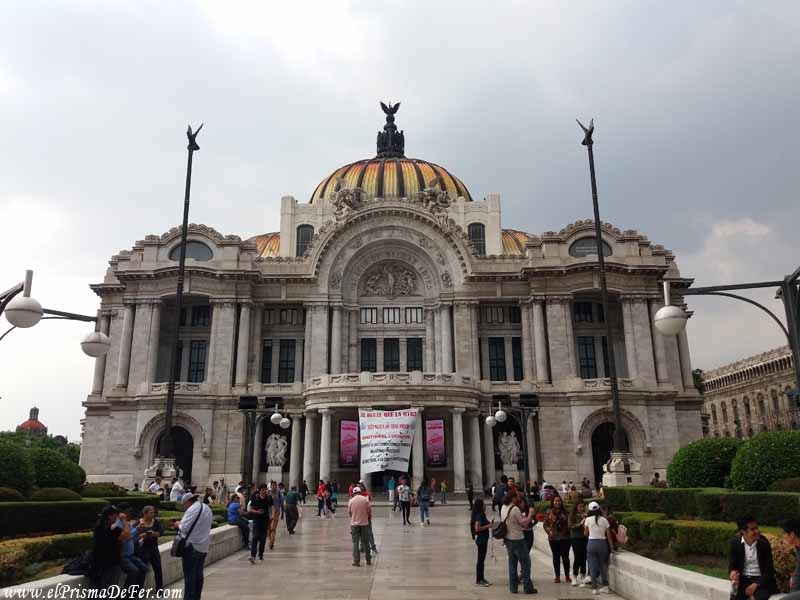
To enjoy the walk more, I recommend taking a guided walking tour, ideal for learning while exploring the historic center.
Visit Chapultepec Forest
Chapultepec Park is one of the largest urban parks in the world, a green lung amidst the chaos of the city. Here you can visit Chapultepec Castle, with its history linked to Mexico's emperors and presidents, and which also offers views of the city.
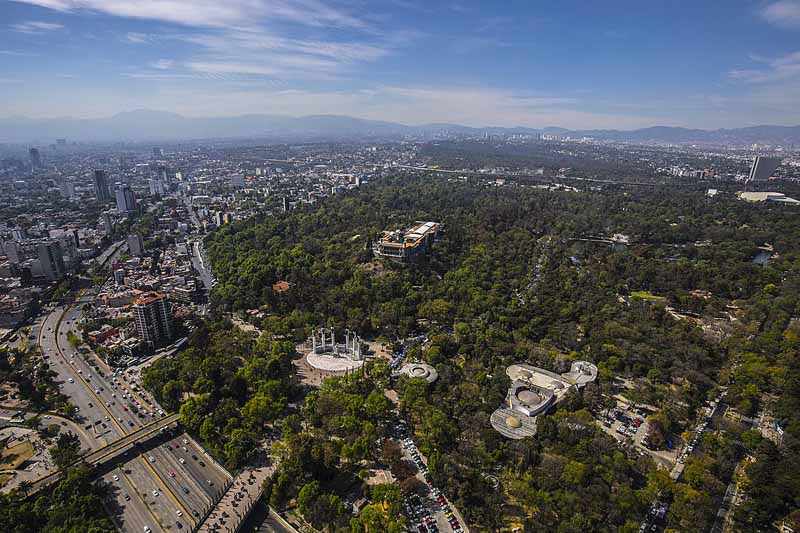
Within the park are also some of the best museums in CDMX, such as the National Museum of Anthropology, essential for understanding pre-Hispanic cultures, and the Museum of Modern Art, with works by great Mexican artists.
Discover Coyoacán and Frida Kahlo's legacy
The Coyoacan neighborhood is one of the most picturesque and bohemian in Mexico City. Its cobblestone streets, quiet plazas, and charming cafes make it feel like a village within the larger city.
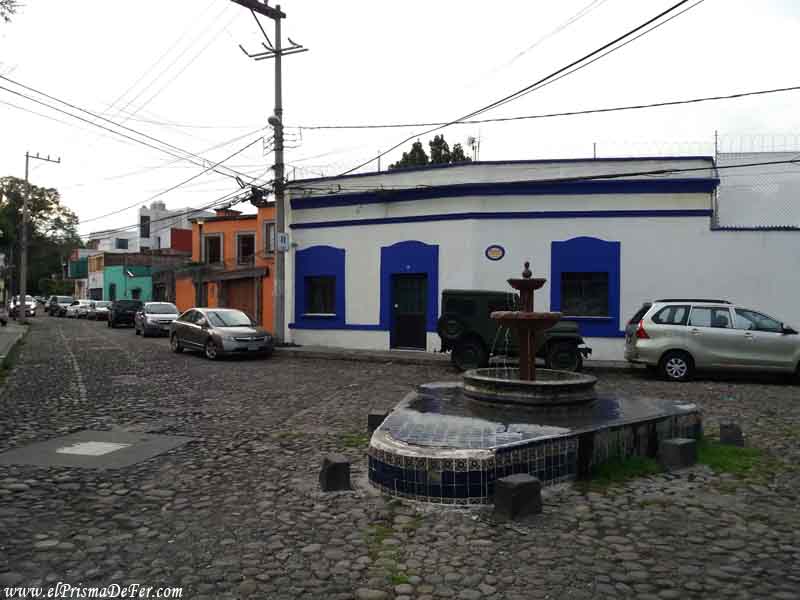
The main attraction is the Blue House, where Frida Kahlo lived and which now functions as a museum, with personal objects and works by the artist.
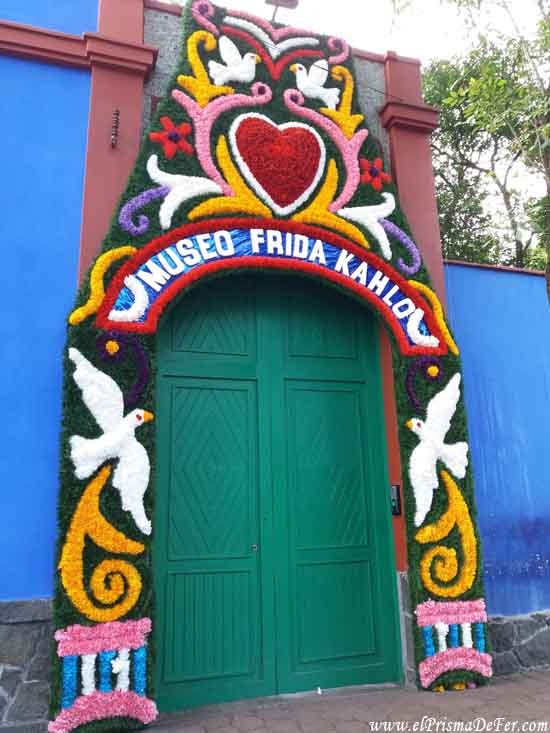
Coyoacán also boasts traditional markets, colonial churches, and a vibrant cultural atmosphere, perfect for a full day of exploring.
How to get there
The most practical way to get to Coyoacán is by subway, taking Line 3 (olive green) and getting off at the Coyoacán station, which leaves you just a few minutes walk from the central plaza and the Frida Kahlo museum.
You can also get there by Metrobus (Lines 1 and 3) or by taxi/app from the center, which usually takes between 30 and 45 minutes depending on traffic.
For those who prefer comfort and guidance, there are tours that combine a visit to the Blue House with other cultural attractions in the neighborhood.
Stroll through Xochimilco
In the south of the city is Xochimilco, famous for its canals, the last vestiges of the lake system on which Tenochtitlán was built. Here you can board a trajinera, a colorful boat that travels through the canals while live music plays and you enjoy food and drinks on board.
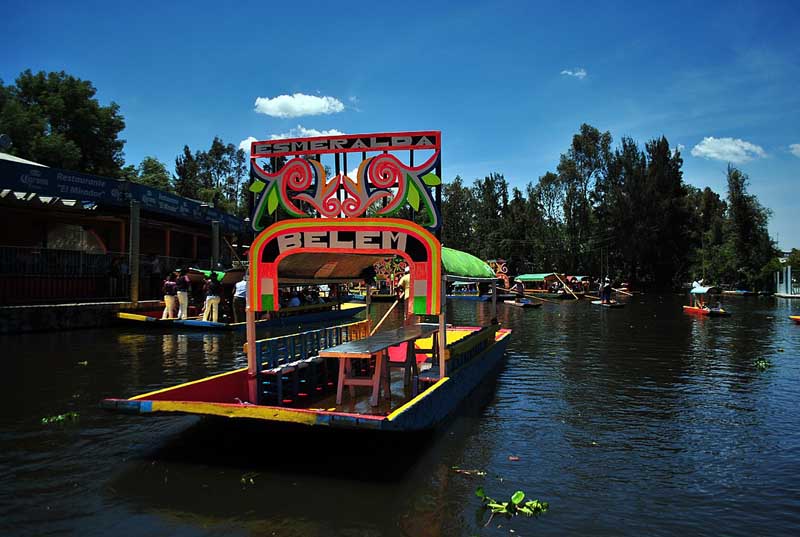
It is a very popular experience among locals and tourists, which allows you to see another side of the city and connect with a tradition that has been kept alive since pre-Hispanic times.
Climb the Latin American Tower
For one of the best views of Mexico City, you can go up the Torre Latinoamericana, one of the most iconic skyscrapers in the city center.
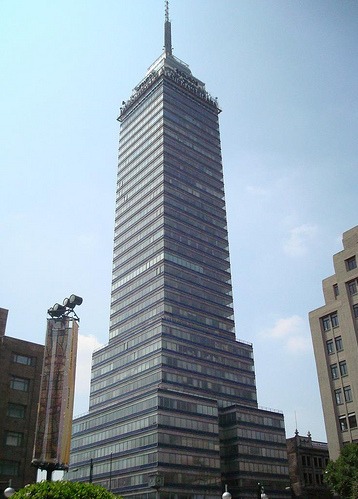
From its observation deck, you can admire the vastness of the city, especially on clear days. The building also houses exhibitions, cafes, and a bar with panoramic views, making it a great place to visit both day and night.
Tickets to enter the viewing platform can be purchased in advance from the official website.
Visit the Basilica of Guadalupe and its surroundings
The Basilica of Santa María de Guadalupe is located at the foot of Tepeyac Hill and is one of the most important Marian shrines in the world.
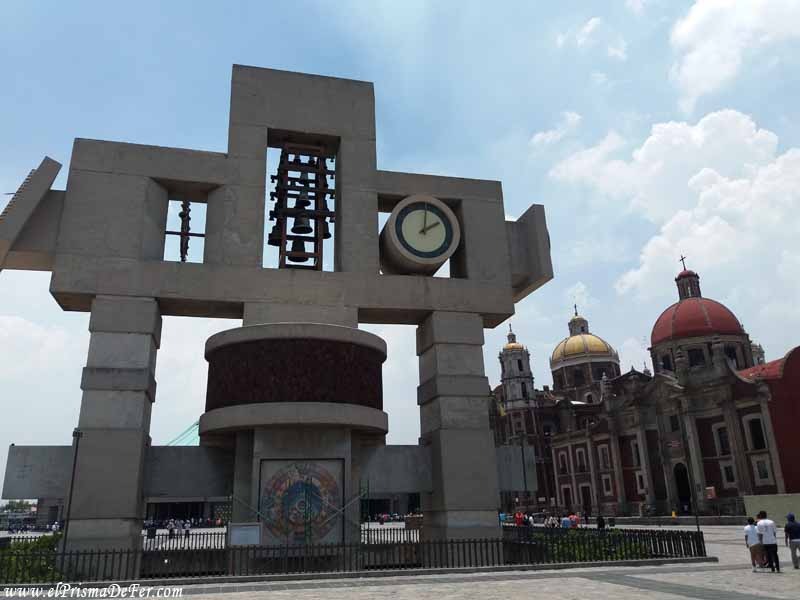
The complex (new sanctuary, old basilica, chapels and open spaces) forms a large area that combines devotion, history and viewpoints overlooking the neighborhood.
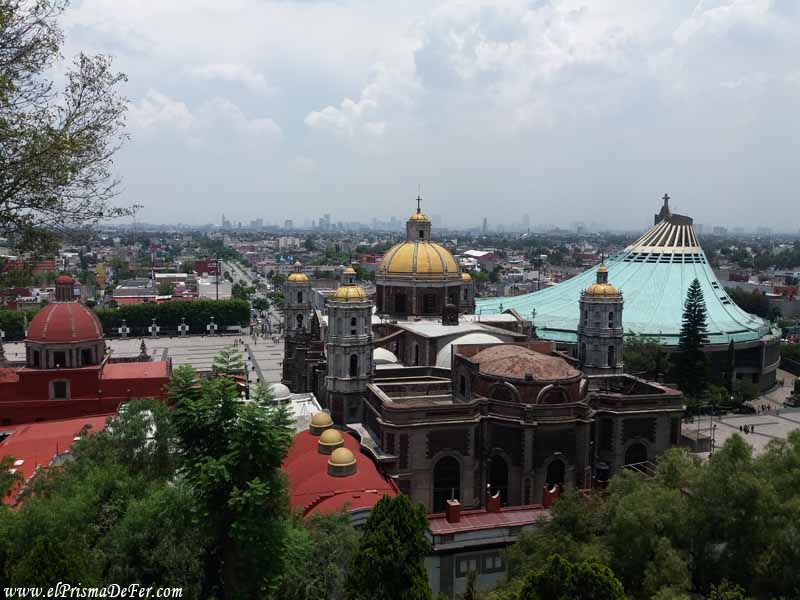
The New Shrine houses the famous tilma of Saint Juan Diego, the image of the Virgin of Guadalupe, which was moved there in 1976, and attracts millions of pilgrims each year (especially around December 12).
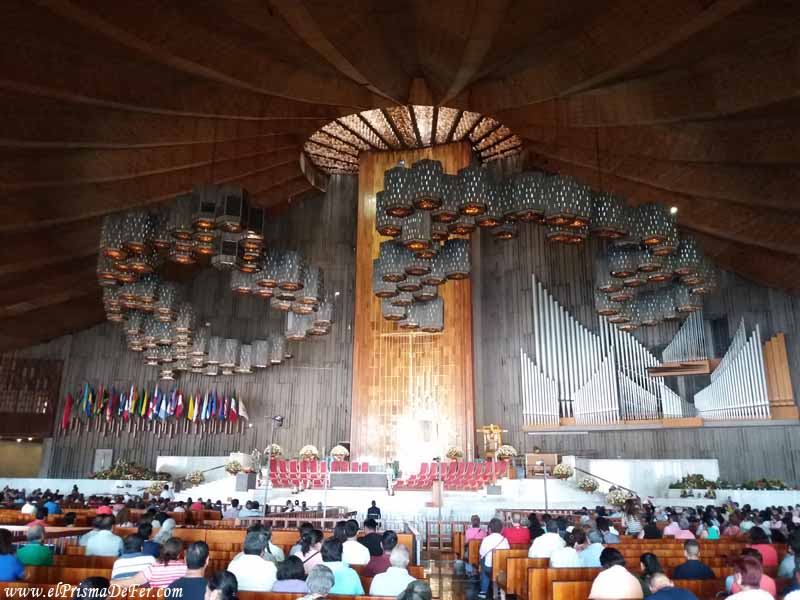
What to see inside the complex
Don't miss the interior of the New Sanctuary (its circular layout allows you to see the tilma from several angles), the Old Basilica (Expiatory Temple), the Capilla del Cerrito at the top of the hill, and the small museum/archive that explains the history of the apparitions and pilgrimages.
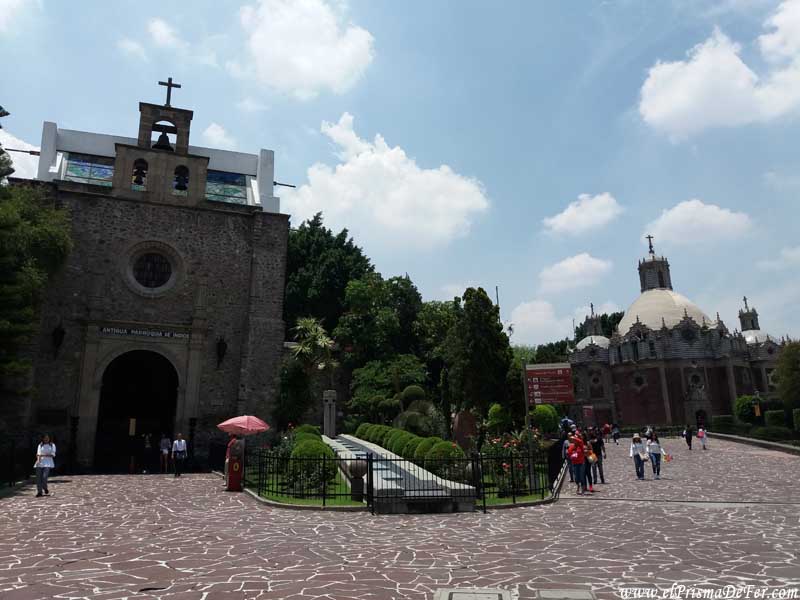
Walking through the large square and its corridors gives you a sense of the place: popular devotion, stalls, and pilgrims from all over.
How to get there
The most practical way is by metro: the La Villa–Basílica station (Line 6) is just a few minutes' walk from the complex.
Several Metrobus lines also serve the area, and there are hop-on hop-off bus/tour services that stop in the area, as well as taxis and app options. If you're coming from the city center, the trip is usually direct and comfortable.
Practical advice
- Avoid peak times if you want a more peaceful tour (December 12th and surrounding days are extremely busy).
- Visit both the new and the old basilica and climb Tepeyac Hill for other perspectives and viewpoints.
- Dress respectfully (it's a place of worship), bring water, and allow extra time if you want to stay for mass or tour the museum.
- If you prefer not to go on your own, there are guided tours that explain the history and logistics of the visit in detail.
Excursion to Teotihuacan
Visiting Teotihuacan is a must-see excursion from Mexico City. Just 50 km from the capital, this archaeological site was one of the largest and most influential cities in Mesoamerica, known as the City of the Gods.

Its history dates back to the first millennium AD, when it had more than 100,000 inhabitants and became an important political, religious, and cultural center of the region.
What to see in Teotihuacán
The complex is immense, and it's worth spending at least half a day exploring it. The most impressive are its two great pyramids: the Pyramid of the Sun, one of the tallest structures in Mesoamerica, and the Pyramid of the Moon, which offers spectacular views of the Avenue of the Dead.

Along the route, you'll also find palaces decorated with murals, ceremonial plazas, and remains of what was a planned city ahead of its time. The Teotihuacan Culture Museum, within the complex, helps you better understand the historical and cultural significance of this site.
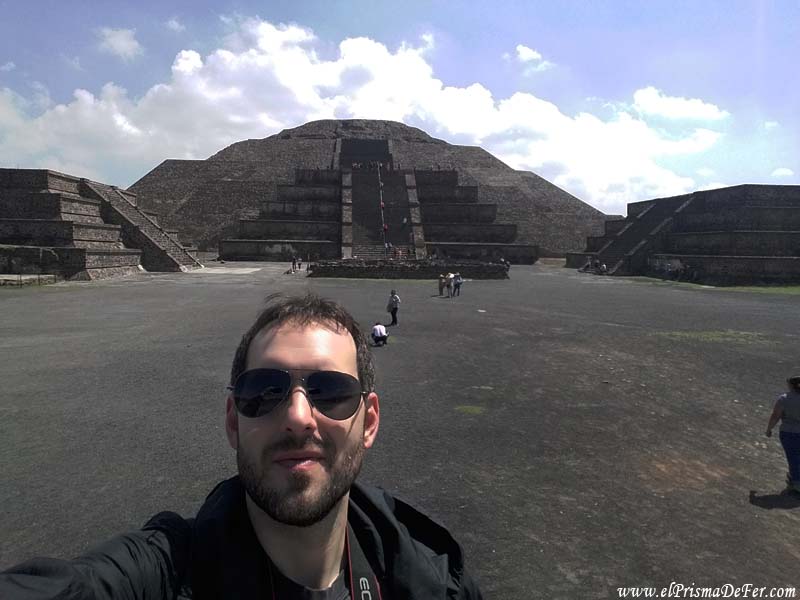
Visiting Teotihuacán is a unique experience: walking along the Avenue of the Dead and seeing the pyramids up close is like being transported to a civilization that profoundly shaped the history of Mexico and the entire continent.
How to get to Teotihuacán from Mexico City
The easiest way is to take a bus from the Terminal del Norte, which leaves every 15–20 minutes and takes about an hour to reach the archaeological site. You can also book an organized tour that includes transportation and a guide, or take a private car along the highway toward Pachuca.
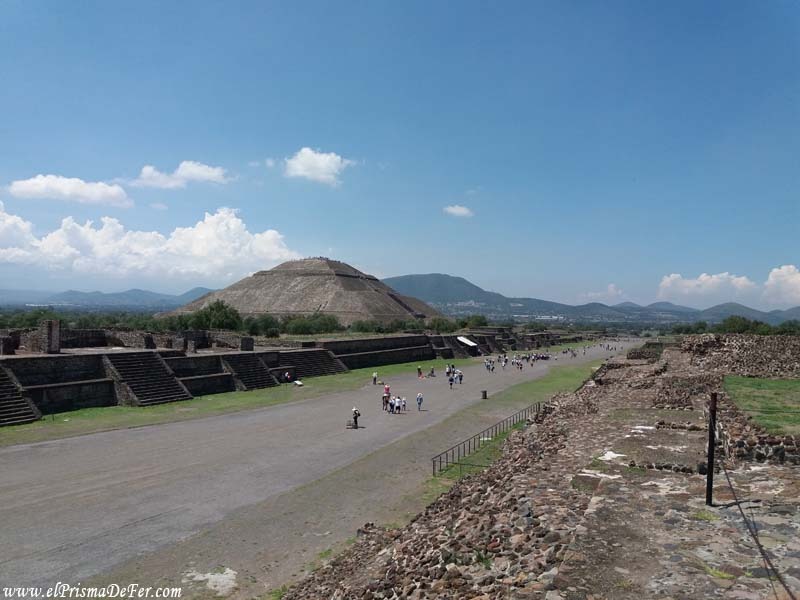
Activities organized from Mexico City
Day of the Dead in Mexico City
The Day of the Dead is one of Mexico's most important and colorful traditions. It is celebrated every November 1st and 2nd, dates on which, according to tradition, the souls of the deceased return to spend time with their families and loved ones.
During these dates, altars and offerings are set up in plazas, museums, and private homes, decorated with flowers, candles, bread of the dead, sugar skulls, and objects commemorating the deceased.
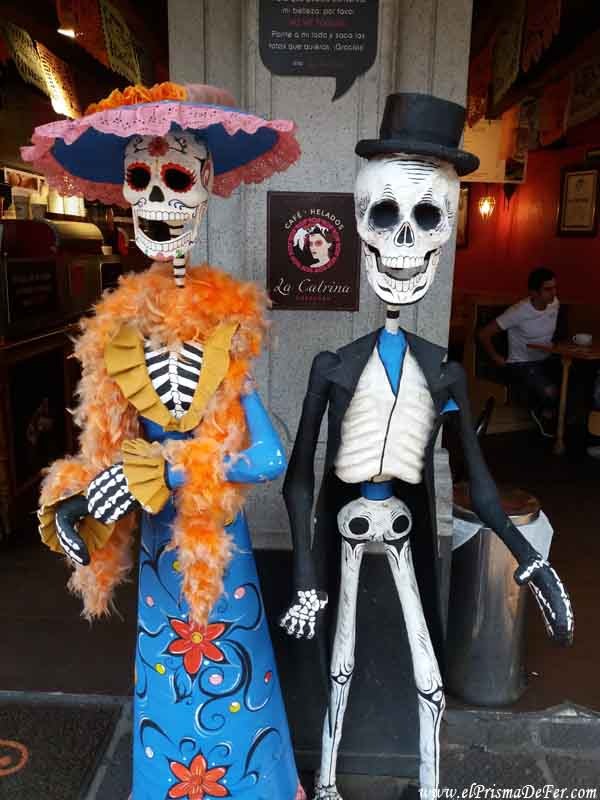
One of the most notable events is the grand Day of the Dead parade, which runs along Paseo de la Reforma with floats, giant catrinas, and music, attracting thousands of people.
Security in Mexico City
During my short visit to Mexico City, I found the city to be quite safe to walk around during the day, especially in the tourist areas like the Historic Center, Coyoacán, Chapultepec, and Polanco. There's a lot of activity, tourist police, and locals who are accustomed to visitors, which makes it easy to walk around and enjoy the attractions.
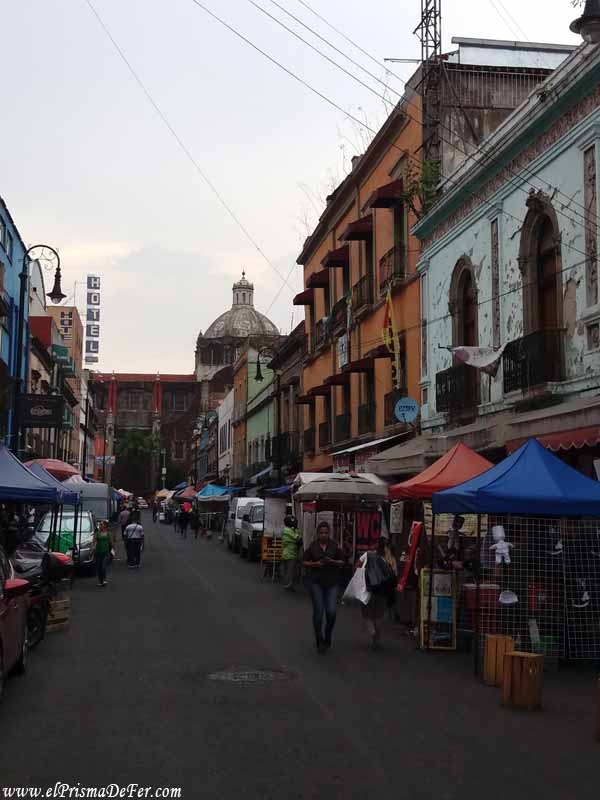
However, at night the situation changes. There are areas that are best avoid, especially if you are alone, as they may be more unsafe or prone to theft. Some of these areas include Iztapalapa, Tepito, parts of Ecatepec, and certain peripheral areas in the south and north of the city. In these places, it is advisable not to walk alone, not to display valuables, and, if possible, to travel in a reliable taxi or through secure apps like Uber or Didi.
In general, with common sense and caution, it's possible to enjoy Mexico City without problems, but it's always important to be informed about the areas and times to avoid.
Where to stay in Mexico City
Choosing the right area to stay in Mexico City makes a big difference when it comes to enjoying the city, especially in terms of safety and proximity to attractions.
Historic Center
Staying in the Historic Center allows you to be close to the main tourist attractions: the Zócalo, the Cathedral, the National Palace, and museums like the Templo Mayor and Bellas Artes. It's ideal for those who want to walk through historic streets and be surrounded by culture. There are boutique hotels, hostels, and some luxury chains. At night, it's best to be cautious and limit your outings to crowded areas.
Coyoacán and San Ángel
These neighborhoods offer a quieter, more bohemian atmosphere. Coyoacán is famous for Frida Kahlo's Blue House, plazas and cafes; San Ángel stands out for its colonial architecture and weekend art markets. They're perfect for those looking for history, culture, and tranquility without straying too far from the city center.
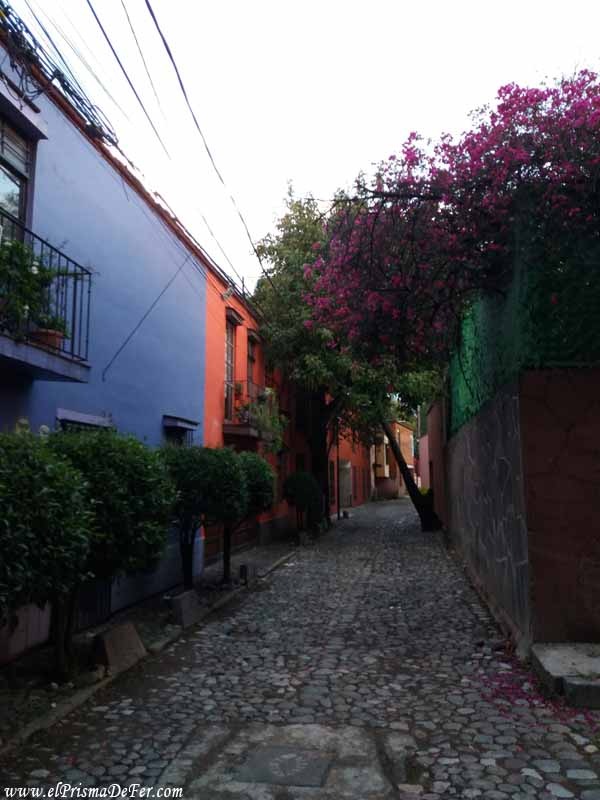
Roma and Condesa
If you're looking for nightlife, modern cuisine, and stylish cafes, Roma and Condesa are the best options. They are safe neighborhoods with parks, restaurants, bars, and a cosmopolitan atmosphere. Modern hostels, boutique hotels, and short-term rental apartments predominate here.
Polanco
Polanco is the most exclusive area, with luxury hotels, haute cuisine restaurants and premium shopping centers. Ideal if you're looking for maximum comfort and security, although it's more expensive than the rest of the city.
How long to stay
To explore the essentials of Mexico City and its surroundings, 3 to 5 days are usually enough. With that time you can visit the Historic Center, museums, neighborhoods like Coyoacán and Roma-Condesa, the Chapultepec Forest and take at least one day trip to nearby places like Teotihuacán.
If you have a week or more, you can also explore Xochimilco, Puebla, Taxco or Toluca, enjoy more museums, parks and local cuisine, and take more time to absorb the daily life of the city.
How to get from the airport to downtown Mexico City
Getting to downtown CDMX from Benito Juárez International Airport (AICM) is quite easy, and there are several options depending on your budget and convenience:
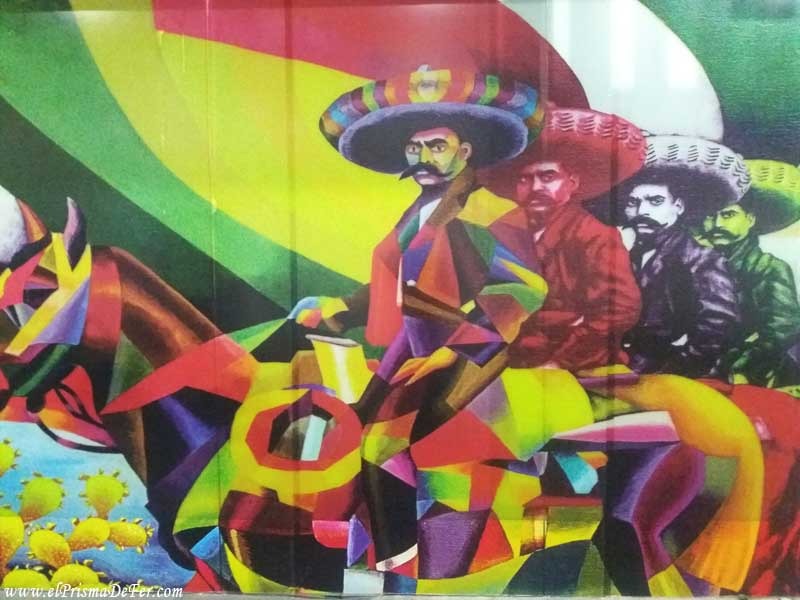
Metro
The metro is the cheapest option. From Terminal 1 of the airport you can take Line 5 (yellow) to the Pantitlán station, and there transfer to Line 9 (brown) or Line 1 (pink) which will take you to the historic center. The ride costs less than $0.30, but keep in mind that it can be very crowded during rush hour and it's not the most comfortable option if you have a lot of luggage.
Buses and Metrobus
Another alternative is the Metrobus Line 4, which connects the two airport terminals with the city center and some strategic points in the city. It's a little more convenient than the metro and also very economical.
Taxi and apps
For added convenience and safety, especially if you're traveling with luggage or at night, you can use authorized airport taxis or apps like Uber, Didi, or Cabify. They're more expensive than public transportation, but reliable and direct, taking approximately 30–45 minutes depending on traffic.
Airport buses and private transfers
There are also shuttle or private transfer services, ideal for groups or families. Some hotels offer transportation to and from the airport, simplifying your stay.
Best time to visit
Mexico City has a temperate climate year-round, but the best times to visit are from March to May and from September to November, when rainfall is scarce and temperatures are pleasant.
Summer (June to August) can bring afternoon rain, although mornings are usually sunny, while winter (December to February) is cool, with sunny days and cold nights, ideal for exploring the city without so many tourist crowds.
Thoughts on my visit to Mexico City
My visit to Mexico City was brief: I was only able to stay two days, since my trip was a stopover to Japan. Even so, those two days I walked a lot and was able to feel a little bit of the essence of the city, although I know that I still had a lot to see.
Every street, square, and neighborhood in Mexico City exudes history. It reminded me a lot of Cusco, because it's one of the Latin American cities where the legacy of the conquest is most felt. The pre-Hispanic and colonial influences coexist with intense, modern urban life, creating a unique contrast that gives the capital its unique character.
Overall, I liked the city: its energy, its culture, the museums and neighborhoods like Coyoacán, as well as its colonial heritage. However, I found several areas to be dirty and a bit shady, something that tends to happen in many large South American capitals. Despite that, I'm sure I'd like to return one day to explore more thoroughly and give this fascinating, contrasting city the time it deserves.
